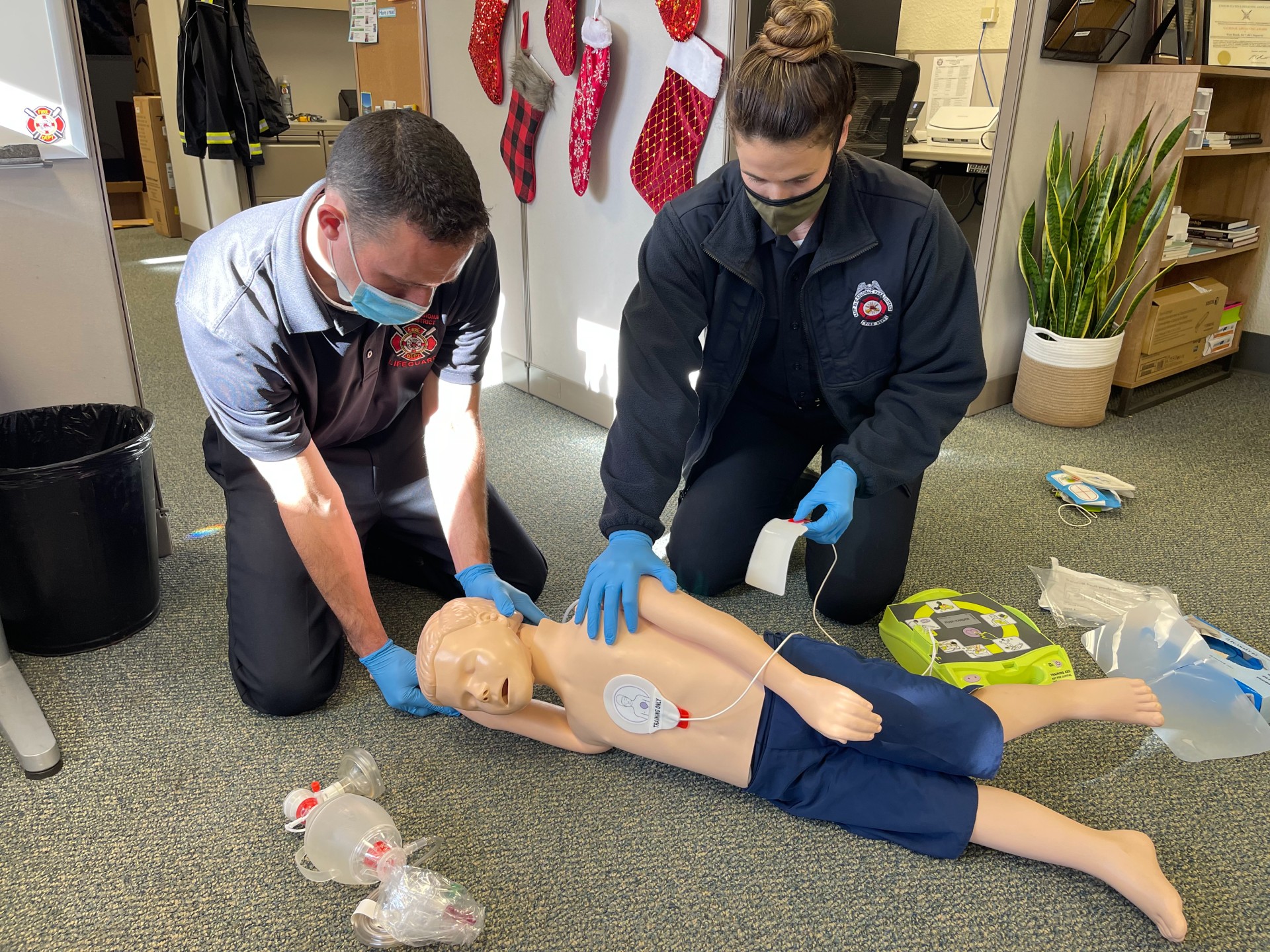Most lifeguards get a fair amount of practice providing care to cuts, scrapes and punctures. Just ask any agency how many Band-Aids they go through, or ask a lifeguard if they carry the bandages in their fanny pack: Most agencies will say, “A lot,” and most lifeguards will say, “Yes,” that they carry Band-Aids along with pocket mask and gloves.
For lifeguards, controlling external bleeding is a fundamental skill that, granted, usually consists of cleaning a wound and covering it with a Band-Aid. But there are occasions when direct pressure is needed to stop the bleeding. And when it comes to life-threatening bleeding, also known as severe bleeding, lifeguards must address it before providing ventilations and CPR. To address severe bleeding, depending on agency, county or state protocols, lifeguards may need additional training to control bleeding using a tourniquet, chest seal or hemostatic dressings.
Let’s review in-service drills that cover controlling external bleeding, from mild to severe.
Mild External Bleeding
Donning gloves, direct pressure drill: Pair lifeguards (one as rescuer, one as victim), with control bleeding supplies available.
Objective: Move to the victim, get consent, then ask the victim to provide direct pressure to their injury, and don a pair of gloves.
Timing goal: 15 seconds
Once both rescuers have demonstrated proficiency, move to these variations:
• Gloves are pulled from a fanny pack (no time change)
• Victim is pulled from the water, and injury site is wet (no time change)
• Lifeguard pulls victim from the water, both victim and lifeguard are wet (25 seconds)
Moderate External Bleeding
Direct pressure/bandaging drill: Pair up lifeguards (one as rescuer, one the victim), with control bleeding supplies available.
Objective: Consent has already been given. Provide direct pressure for 30 seconds, then apply a pressure bandage.
Timing goal: 60 seconds
Three-limb application drill: Pair up lifeguards (one will be rescuer; one the victim), with control bleeding supplies available. Victim is conscious and has a bleeding injury on three limbs.
Objective: The lifeguard will quickly and effectively apply three pressure bandages to the victim’s three injuries. The lifeguard must state that the victim is assisting in controlling bleeding on two of the three injury sites while care is being provided. All three injury sites have a pressure bandage applied.
Timing goal: Two minutes
Severe External Bleeding
Solo rescuer size-up drill: Patient is unconscious and has uncontrolled bleeding from a limb.
Objective: The lifeguard arrives on the scene, does a scene size-up and a primary assessment. During the primary assessment, the lifeguard determines that the victim has a pulse and is breathing, but has severe bleeding. The lifeguard will need to activate the EAP and provide direct pressure. NOTE: Direct pressure can be provided via gloved or ungloved hands.
Timing goal: 20 seconds
Tourniquet, self: Only perform this drill if lifeguards have been trained in this process. Each lifeguard has their own tourniquet(s). Identify the limb that has severe bleeding.
Objective: Apply the tourniquet to the limb that has severe bleeding.
Timing goal: 20 seconds
Once the lifeguard demonstrates proficiency, move to these variations:
• Injury on dominant arm (no time change)
• Multiple limbs are injured (double timing goal)
• Setting is dark, and it is difficult to see (no time change)
Tourniquet, solo rescuer: Only perform this drill if lifeguards have been trained in this process. Lifeguards are paired up (one will be the rescuer, one the victim). Tourniquet supplies are available. Identify the limb that has severe bleeding.
Objective: Apply the tourniquet to the limb that has severe bleeding.
Timing goal: 20 seconds
Once the lifeguard demonstrates proficiency, move to the variations:
• Setting is dark, and it is difficult to see (no time change)
• Rescuer and victim must minimize noise (no time change)
• Once tourniquet has been applied, move victim 30 feet (30 seconds)
Tourniquet, multi-rescuer: Only perform this drill if lifeguards have been trained in this process. Lifeguards form three-person teams (two will be rescuers, one the victim). Tourniquet supplies are available. Identify the limb that has severe bleeding.
Objective: One lifeguard applies direct pressure, while the second applies the tourniquet to the limb that has severe bleeding.
Timing goal: Twenty seconds.
Once the lifeguards demonstrate proficiency, move to the variations:
• Setting is dark, and it is difficult to see (no time change)
• Rescuers and victim must minimize noise (no time change)
• Once tourniquet has been applied, move victim 30 feet (30 seconds)
• Two victims, one rescuer (90-120 seconds)
Mistakes to look for
As the trainer, your critical eye is needed so participants don’t make mistakes that could cause delays or compromise care. Here are some errors you might see:
• Lifeguard doesn’t ask for consent
• Lifeguard doesn’t ask the victim for assistance in providing direct pressure
• Lifeguard doesn’t don gloves quickly
• Lifeguard doesn’t provide effective direct pressure
• Lifeguard doesn’t tighten the tourniquet enough to stop the bleeding
• Lifeguard delays in providing care for severe bleeding
To make the 30-minute in-service compact and effective, conduct it in the best setting at your facility. Make sure you have enough equipment, and clearly explain each drill’s objectives.
Remind your team that death from uncontrolled severe bleeding can happen in under 60 seconds.
Remember, less talk and more skill repetition. Controlling severe bleeding should be trained on as much as ventilations and CPR. Your job is to get your lifeguard team rescue-ready.
Good luck and keep training.
